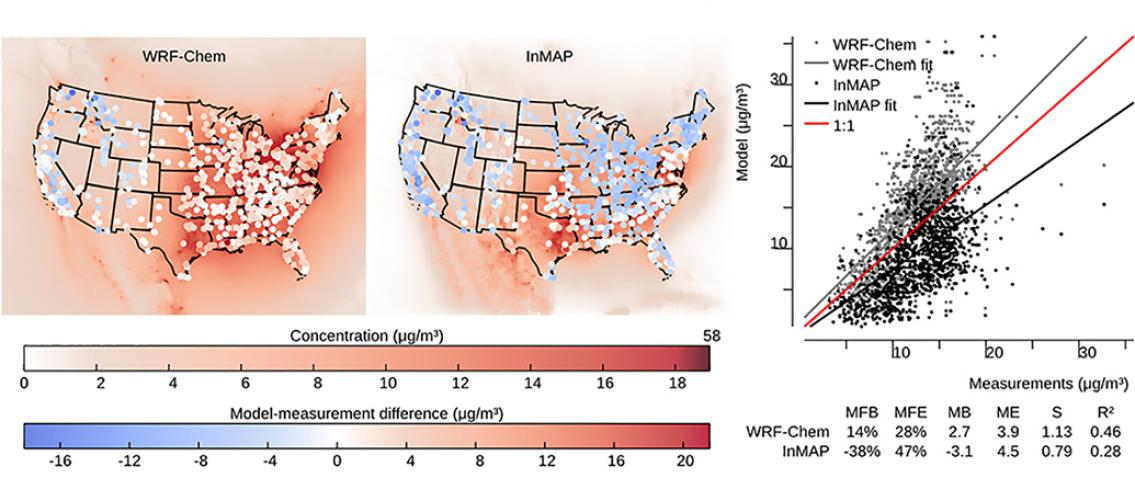
Scientists studying air pollution use powerful computer models to simulate how various types of pollution spread in the atmosphere. Among these models are Eulerian Chemical Transportation Models (CTMs), which are able to simulate the effectiveness of pollution-reduction efforts. This provides necessary information to policymakers and researchers who are trying to reduce illness and death rates in populations affected by air pollution. However, CTMs are computationally expensive, time-consuming, and require expertise in using high-performance computing systems, such as MSI’s Mesabi and Itasca.
Recently, a group of MSI users developed a model that can be used by non-experts on less powerful computers to determine whether a given control measure is having the desired health outcomes. Dr. Christopher Tessum (Department of Civil and Environmental Engineering, University of Washington, Seattle, Washington), Associate Professor Jason Hill (MSI Principal Investigator; Department of Bioproducts and Biosystems Engineering, UMN), and Professor Julian Marshall (MSI Principal Investigator; Department of Civil and Environmental Engineering, UW; adjunct, Department of Civil, Environmental, and Geo- Engineering, UMN), published a paper in the journal PLoS One earlier this year that described the model and its use. The new model, called InMAP (Intervention Model for Air Pollution), is intended as an alternative for researchers studying the air pollution health impacts of marginal emission reductions or other pollution-control efforts. InMAP uses outputs from CTMs and a variable spatial resolution computational grid for simulations, and requires several orders of magnitude less computational power. The model works especially well for measuring effects of reductions in fine particulate matter (PM2.5), particulate sulfate (pSO4), and secondary organic aerosol (SOA). PM2.5 is a major cause of air-pollution-related death, with chronic exposure to PM2.5 causing approximately 95% of these deaths.
InMAP is being made available as open-source software with information and download available on the web. The paper can be read on the PLoS One website: Christopher W. Tessum, Jason D. Hill, Julian D. Marshall. 2017. InMAP: A Model for Air Pollution Interventions. PLoS One 12(4): e0176131. DOI:10.1371/journal.pone.0176131. The authors used MSI’s supercomputers for some of the computational work for the paper.
The lead author, Dr. Tessum, recently earned his PhD as a member of Professor Marshall’s research group at the University of Minnesota. Research by the Marshall and Hill groups has appeared on the MSI website in February 2015 (Effects of Alternative Fuels on Air Quality and September 2014 (Air Pollution and Socioeconomic Status).
Image Description: Comparison of WRF-Chem [a CTM] and InMAP performance in predicting annual average observed total PM2.5 concentrations.
The background colors in the maps represent predicted concentrations, and the colors of the circles on the maps represent the difference between modeled and measured values at measurement locations. For the comparison shown here, on average WRF-Chem overpredicts and InMAP underpredicts as compared to observations. Abbrevations: MFB = mean fractional bias; MFE = mean fractional error; MB = mean bias; ME = mean error; MR = model ratio; S = slope of regression line; R2 = squared Pearson correlation coefficient. Image and description, CW Tessum et al. PLoS One 12(4): e0176131.
posted on July 17, 2017